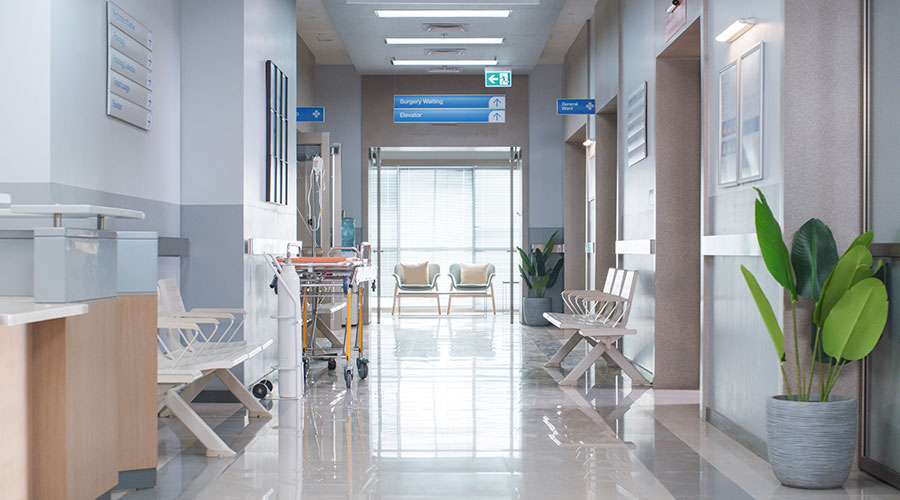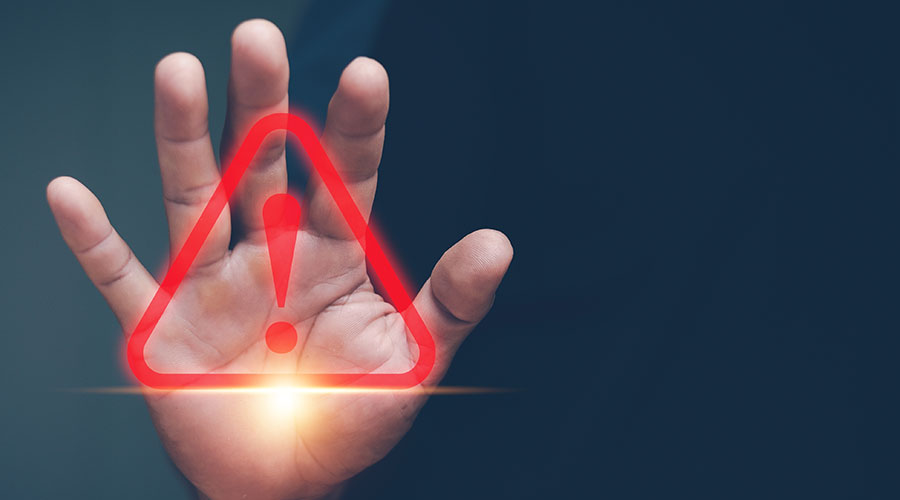It is generally accepted that Staphylococcus aureus (Staph) and the antibiotic resistant strain, Methicillin Resistant Staphylococcus aureus (MRSA) can be found on environmental surfaces and patient care equipment in a healthcare environment. While it is not clear what percentage of Staph/MRSA infections are transmitted via environmental surfaces or through contaminated hands of healthcare workers, the total burden is approximately 119,000 Staph/MRSA-caused healthcare-associated infections (HAIs) each year or 16.5 percent of all HAIs in the U.S.
The literature around how this organism and other environmentally transmitted pathogens move throughout the healthcare environment only partially explains the dynamics of how environmental dissemination occurs. This article looks at three recent studies that contribute to a better understanding of how Staph/MRSA is present and can be disseminated in a healthcare environment and how current interventions, such as hand hygiene and surface disinfection, may need to be modified based on this understanding.
Hand-contamination rates
A study by Creamer (2010)[1] helped explain the prevalence of Staph/MRSA by looking at hand contamination rates with MRSA for healthcare workers in a hospital setting. Hands were positive for MRSA 5 percent of the time, indicating that a background contamination rate of the environment gives a healthcare worker a 1 in 20 chance of having their hands contaminated at any given time.
Gloves always prevented hand contamination in the study, whether hand hygiene was performed or not. Ungloved hands were positive for MRSA 3 percent of the time after the employee had performed hand hygiene, indicating that even if hand hygiene is being performed, there is no guarantee that MRSA was eliminated completely from the hands. The background contamination rate of MRSA presented in this study helps demonstrate the widespread prevalence of Staph and MRSA in a healthcare facility. Two recent studies focusing on hand hygiene observations and high-touch surfaces provide some additional insight into this issue.
Hand-hygiene observations
In the King (2016)[2] study, which was completed in the UK, the study team observed healthcare worker activity and documented hand hygiene. Eighty eight percent of hand hygiene observations were nurses, with compliance rates of 27 to 80 percent depending on the situation and type of care provided.
Hand hygiene compliance did increase with the number of surfaces touched in the room, but even when hand hygiene did occur, the patient was often touched again before the employee left the room, indicating that employees were likely to be contaminated when leaving the room even if they had done hand hygiene while in the room. It seems that they possibly did not believe it was necessary to perform hand hygiene again upon leaving the room.
Of note in the data was that time spent in the room did not correlate with the number of surfaces touched by the healthcare worker or the rate of hand hygiene compliance. In other words, just because an employee spent more time in the patient’s room, this did not equal more direct patient contact or more care delivered, which would have increased the need to perform hand hygiene.
In this hospital, high-touch environmental surfaces and medical equipment near the patient were to be cleaned by the nurses. Surfaces such as the patient chart and computer workstation were touched in nearly all care episodes, but were never cleaned during the study period. This indicates the frequent problem of having surfaces or equipment with no clear ownership for cleaning/disinfection.
Research on surface contamination
The van Balen study (2016),[3] which was conducted at a medical center in Ohio, sampled high-touch surfaces over a 12 month period to determine whether surfaces were contaminated with MRSA and specifically which sub-strain (pulsotype) was present. Surfaces were contaminated on average 23.7 percent of the time, indicating contamination was frequent and widespread.
However the pulsotype was not consistent. It showed a continuous change of MRSA clones over the year. Only 4 of the 18 pulsotypes that were present in the first six months of the study were present in the last six months of the study, demonstrating this shift over time and likely, that new pulsotypes are being introduced to the medical center on a regular basis. Only one pulsotype was found to consistently contaminate the same surface, but several surfaces (chart holders, hand rails, elevators, hand sanitizer dispensers, medicine carts and medicine room cabinets), were found to be frequently contaminated. These surfaces are touched by many different people throughout the day and may not be disinfected as frequently (or at all) as patient care equipment and environmental surfaces near the patient.
Key Insights
These studies paint a picture of the following key points.
1. MRSA contamination on surfaces is widespread - up to 24 percent of the time according to these studies.
2. Healthcare workers’ hands are frequently contaminated – about 5 percent of the time and 3 percent of the time after performing hand hygiene.
3. Hand hygiene and surface disinfection are effective in removing MRSA contamination, but are not being performed as frequently as is required to completely remove the risk of MRSA contamination.
4. Some equipment is not disinfected frequently and many of these surfaces are touched with a high frequency. These surfaces have been found to be contaminated at higher rates than other surfaces with either lower hand contact frequency or with higher disinfection frequency.
Implications
Because the pulsotype keeps changing, it’s not the case that there is one pulsotype that can’t be effectively removed, which would point to surfaces being missed during cleaning. Rather, the research highlights an intricately complex environment where surface recontamination is occurring at a much higher frequency than the events designed to eliminate the contamination. This calls attention to the need to assess the effectiveness given the frequency of current practices in an environment where contamination with different pulsotypes is occurring on a regular basis.
Insights from the research, such as certain surfaces not being disinfected frequently enough, hand hygiene compliance rates that are unacceptably low and hands still being contaminated with some level of frequency after healthcare workers perform hand hygiene, all point towards areas for action by healthcare facilities.
It is thus far unproven with what frequency a surface needs to be disinfected to adequately address the risk of transmission of pathogens, but the risk of frequent contamination with different pulsotypes may justify considering disinfection on a more than daily basis for some environmental surfaces.
While the World Health Organization (WHO) model for hand hygiene in the patient environment has been shown to be adequate to protect patients from the contaminated hands of a healthcare worker, the WHO model does not consider the risks associated with dissemination of pathogens outside of the immediate patient care environment if a moment is missed or the hand hygiene procedure is performed poorly. This may be contributing to the rate of dissemination of different pulsotypes within a healthcare facility.
This research helps explain that Staph/MRSA dissemination is prevalent in healthcare facilities and provides some insight into why current environmental hygiene approaches are not keeping pace with the contamination.
Peter Teska is a Global Infection Prevention Application Expert with Sealed Air’s Diversey Care division and can be reached at peter.teska@sealediar.com. Jim Gauthier is a Senior Clinical Advisor with Diversey Care and can be reached at james.gauthier@sealedair.com. For more information, visit www.sealedair.com.
[1] Creamer E, Dorrian S, Dolan A, Sherlock O, Fitzgerald-Hughes D, Thomas T, Walsh J, Shore A, Sullivan D, Kinnevey P, Rossney AS, Cunney R, Coleman D, Humphreys H. “When are the hands of healthcare workers positive for meticillin-resistant Stapylococcus aureus?”, J Hosp Infect, 2010; 75: 107-111.
[2] King MF, Noakes CJ, Sleigh PA, Bale S, Waters L, “Relationship between healthcare worker surface contacts, care type and hand hygiene: an observational study in a single-bed hospital ward,” J Hosp Infect, 2016 ; 94: 48-51.
[3] Van Balen J, Bottichio L, Stevenson K, Want SH, Nava-Hoet R, Hoet AE, “Understanding the introduction and circulation of environmental methicillin-resistant Staphylococcus aureus in a large academic medical center during a nonoutbreak, year-long period”, Am J Infect Control, 2016; 44: 925-930.

 Oracle Health Hit by Data Breach, Patient Data Possibly Compromised
Oracle Health Hit by Data Breach, Patient Data Possibly Compromised Ground Broken on New MD Anderson Sugar Land Facility
Ground Broken on New MD Anderson Sugar Land Facility Florida State University Reveals Plans for Panama City Beach Hospital
Florida State University Reveals Plans for Panama City Beach Hospital The Effect of Over-Cleaning on Human Health
The Effect of Over-Cleaning on Human Health Rumored Terror Threat to Hospitals Prompts FBI Warning
Rumored Terror Threat to Hospitals Prompts FBI Warning